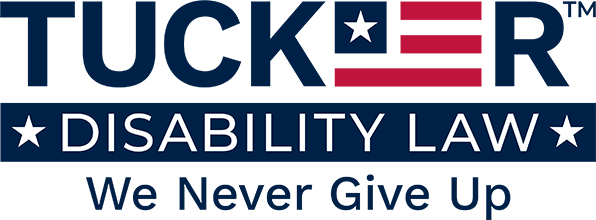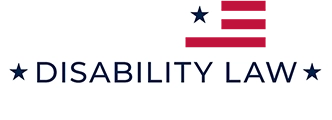Last week, as Americans honored those who served on Veterans Day, law enforcement agencies issued urgent warnings about scammers targeting veterans with a cruel new scheme. On November 11, 2025, the Better Business Bureau warned that “the Department of Veterans Affairs says a VA overpayment scheme heads the list of scams targeting veterans” this year.
If you get a text, email, or letter saying you owe the VA money because they overpaid you, stop before you do anything. This VA overpayment scam is targeting veterans across the country right now, and it’s costing people thousands of dollars.
Here’s what makes this VA overpayment scam so dangerous: legitimate overpayments DO happen. Veterans sometimes genuinely owe the VA money. Scammers know this and use it to trick you into paying them instead of the VA—or worse, stealing your personal information.
California Attorney General Rob Bonta issued a consumer alert on Veterans Day 2025 warning veterans and their families to be aware of scams and fraud, including fraud perpetrated by predatory individuals or companies who exploit veterans seeking assistance accessing their benefits.
Let’s break down how to spot the fake notices, what to do if you get one, and how to handle it if you really do owe the VA money.
Why Scammers Targeted Veterans Around Veterans Day
Scammers aren’t stupid. They knew that Veterans Day would bring increased attention to veteran issues, more communication from legitimate veteran organizations, and heightened emotions around service and sacrifice.
An AARP survey found nearly four in ten veterans—more than seven million people—have been approached by fake government or VA scams.
Scammers ramped up their efforts around Veterans Day because:
- Veterans’ mailboxes and inboxes were already full of veteran-related messages
- You’re less suspicious when you receive another “official” communication during this time
- Emotional appeals about honoring your service lower your guard
- Many veteran organizations conducted legitimate outreach during the holiday
This timing made it harder to spot the fakes among the real messages—and those scam attempts are continuing now.
What Is the VA Overpayment Scam?
In 2025, the VA received reports of a new scam involving bogus overpayment notifications targeting veterans and beneficiaries who receive VA benefit payments. Scammers impersonate VA employees and send fraudulent text messages, emails, or phone calls telling veterans they owe the VA money because of a debt due to an overpayment of VA benefits.
These scammers make their messages look official with:
- VA logos and letterhead
- Formal language that sounds like government communication
- Specific dollar amounts you supposedly owe
- Urgent warnings about penalties or benefit suspension
The goal? Get you to send them money or hand over sensitive information like your Social Security number, banking details, or VA login credentials.
Why This VA Overpayment Scam Works So Well
Here’s the cruel reality: The VA issued at least $5.1 billion in compensation and pension overpayments from fiscal year 2021 to fiscal year 2024.
Legitimate overpayments happen all the time because of:
- Changes in marital status that weren’t updated quickly
- Dependent children aging out
- Income changes affecting pension eligibility
- VA administrative errors
- Payment systems not stopping benefits when they should
Since real overpayments are common, when you get a notice claiming you owe money, you might assume it’s legitimate. That’s exactly what scammers count on.
How to Spot a Fake VA Overpayment Notice
Red Flags That Scream “Scam”:
Demands for immediate payment. Real VA notices always direct you to official channels like VA.gov or the Debt Management Center at 1-800-827-0648. They don’t demand instant action.
Weird payment methods. If someone insists you must repay the debt immediately via wire transfer, gift cards, cryptocurrency, or other non-traditional payment methods, it’s a scam. The VA never asks for payment through these channels.
Contact through text or social media. The VA doesn’t send debt notifications via text message or social media. If your first notice of an overpayment comes through these channels, it’s fake.
Requests for login credentials. The VA will never ask for your VA.gov username and password. Ever.
Threats of prosecution. Scammers use scare tactics like threatening jail time or criminal charges. The VA doesn’t operate this way.
Links to non-VA websites. Hover over any links before clicking. If they don’t start with “https://www.va.gov,” they’re fake.
Missing details. Legitimate VA debt letters include specific account numbers, detailed explanations of why you owe money, and clear information about your appeal rights. Vague letters lacking these details are likely scams.
What Real VA Overpayment Notices Look Like
When the VA genuinely needs to notify you about an overpayment, here’s what happens:
You get a formal letter in the mail. When the VA determines an actual overpayment, it sends a formal letter explaining the amount and your options to appeal or set up a payment plan. This is the primary notification method.
The letter includes specific information:
- Exact amount owed
- Explanation of why the overpayment occurred
- Time period covered
- Your appeal rights
- Payment options
- Contact information for the Debt Management Center
You can verify it online. Log into your actual VA.gov account (by typing the address directly into your browser, not clicking a link) to see if you have any debts listed.
They give you options. The VA offers payment plans, waiver requests, and dispute processes. You’re not forced into immediate action.
Step-by-Step: What to Do If You Get an Overpayment Notice
Step 1: Don’t panic and don’t pay immediately.
Take a breath. Even if it’s legitimate, you have time and options.
Step 2: Verify it’s real.
Log directly into your VA.gov account by typing the address yourself. Check if any debt is listed there. One easy way to confirm such notifications is to log into your VA.gov account, where you can check any balances due.
Step 3: Call the official VA Debt Management Center.
If you see a debt listed on your account or you’re unsure, call 1-800-827-0648. Don’t use any phone number from the suspicious notice.
Step 4: Don’t click links or open attachments.
If the notice came via email or text, don’t click anything. These can install malware or take you to fake websites designed to steal your information.
Step 5: Report the scam.
If it’s fake, report it to:
- The FTC at ReportFraud.ftc.gov
- Your state attorney general
- The VA OIG Hotline at 1-800-488-8244
What If You Really Do Owe the VA Money?
If you’ve verified through your VA.gov account that you have a legitimate debt, don’t ignore it. But know that you have rights and options.
You can dispute it.
If you think your overpayment or copay bill is an error, you have the right to dispute all or part of the charges. If you dispute the debt within 30 days of receiving your first debt letter, the VA will stop collection actions until they make a decision on the dispute.
You can request a waiver.
If you can’t repay the total amount, you can ask the VA to forgive (waive) part or all of the debt. If your waiver request is submitted within 30 days from when you receive your debt letter, you’ll continue to receive your full benefits while your request is being processed.
Common reasons for waiver approval:
- The overpayment was caused by VA error, not yours
- Paying it back would create financial hardship
- You relied on VA’s error in good faith (for example, you bought a house based on what you thought your benefits would be)
- Collecting the debt would be unjust
You can set up a payment plan.
The VA won’t demand full payment upfront. They work with veterans to create manageable payment plans that don’t leave you unable to meet basic needs.
You have appeal rights.
If the VA denies your waiver or dispute, you can appeal the decision.
Common Reasons Legitimate VA Overpayments Happen
Understanding why real overpayments occur helps you prevent them:
Marital status changes. You got divorced but the VA kept paying you at the married rate because the system wasn’t updated quickly.
Dependent changes. Your child turned 18 or graduated college, but benefits for dependents kept flowing.
Income reporting issues. For pension benefits, your income increased but you didn’t report it, or you reported it but the system didn’t process the change.
Return to active duty. Veterans returning to active duty cannot receive both VA benefits and active-duty pay at the same time, but sometimes the VA systems don’t stop payments as they should.
VA processing errors. Sometimes the VA just makes mistakes in calculating benefits or processing status changes.
How to Protect Yourself from the VA Overpayment Scam
Keep your contact information current. Make sure the VA has your current address, phone number, and email. This way, if they need to reach you, they can do so through legitimate channels.
Monitor your VA.gov account regularly. Log in at least monthly to check your benefit status and look for any unexpected debts or changes.
Never share login credentials. Your VA.gov username and password should never be shared with anyone, including people claiming to be from the VA.
Report changes immediately. If your marital status, dependent status, or income changes, report it to the VA right away. This prevents overpayments from happening in the first place.
Be skeptical of urgent communications. The VA operates on bureaucratic time. If someone claims you need to act “immediately” or “today,” it’s likely a scam.
Use bookmarks for VA websites. Save VA.gov as a bookmark in your browser. Never access your account through links in emails or texts.
Set up two-factor authentication. Enable extra security on your VA.gov account to protect against unauthorized access.
What Makes This Scam Particularly Cruel
Here’s why this VA overpayment scam is especially devastating:
It targets people who already sacrificed. You served your country. Now scammers are exploiting your service to steal from you.
It preys on financial vulnerability. Many veterans rely entirely on their monthly benefits to meet basic needs. The fear of losing those benefits makes you act quickly without thinking.
It exploits trust in government. Veterans are accustomed to dealing with VA paperwork and official communications. Scammers use this familiarity against you.
It can cause real financial harm. Some veterans have sent thousands of dollars to scammers, thinking they were resolving legitimate debts.
Your Rights When Dealing with VA Debt
Whether you’re facing a scam or a legitimate overpayment, know your rights:
You have the right to know why you owe money. The VA must provide a clear explanation of any debt.
You have time to respond. The VA gives you at least 30 days to dispute or request a waiver.
You can’t be forced to pay immediately. Payment plans are available.
You can appeal decisions. If your dispute or waiver is denied, you have appeal rights.
Your benefits can’t be completely eliminated. Even if you owe money, the VA must leave you enough to meet basic needs.
Don’t Let Scammers Win
The VA overpayment scam is designed to catch you off guard and make you act before thinking. But now you know the warning signs.
Remember:
- Real VA debt notices come by mail with detailed information
- The VA never demands immediate payment through wire transfers, gift cards, or cryptocurrency
- You can always verify debt through your VA.gov account
- You have rights, options, and time to respond
If you get a suspicious notice, verify it before you do anything else. And if you need help—whether it’s spotting a scam or dealing with a legitimate overpayment—don’t try to handle it alone.
Get Expert Help Now
At Tucker Disability Law, we’ve helped thousands of veterans navigate complex VA issues. We understand the system, we know your rights, and we’ll fight to protect your benefits. If you’ve been denied your VA disability benefits, or you’re considering a rating increase, we’re here to help guide you through the process.
Use the blue contact section to call us, live chat with us, or message us. You can also message us using our confidential contact form







